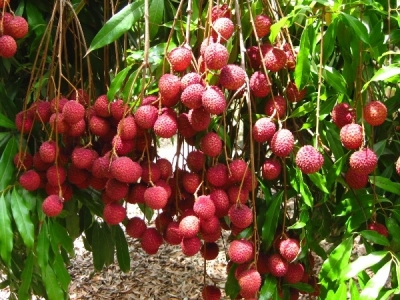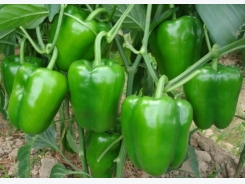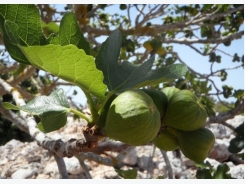Lychee Fruit Cultivation Information Guide

Introduction of Lychee Fruit Cultivation:- Lychee is a sub-tropical fruit native to southern China (Guangdong and Fujian provinces). However, it is being cultivated in most parts of the world. China is no.1 producer of this fruit followed by Taiwan. This fruit is very popular in south East Asia. This fruit can be eaten fresh or canned. When it comes to botanical description of this tree, it is an evergreen tree reaches up to 10–30 meters height. These fruits are fleshy and weigh approximately 20- 25 grams each. Lychee fruit has floral fragrance smell with whitish delicate pulp and sweet flavor. As demand for this is going up every year, farmers are showing interest to grow these fruits on commercial scale. There is a huge potential for Lychee growers as still has a vast untapped potential in the domestic as well as the global market. One can get decent profits in Lychee fruit cultivation with proper horticulture management practices. The following write-up talks more about Lychee fruit cultivation.
Scientific Name or Botanical Name of Lychee Fruit:- Litchi chinensis.
Genus of Lychee Fruit:- Litchi.
Family Name of Lychee Fruit:- Sapindaceae.
Top 10 Countries of Lychee Fruit Production:- The following are top 10 production countries of Lychee Fruit.
- China
- Taiwan
- Thailand
- India
- Madagascar
- South Africa
- Region
- Mauritius
- Australia
- United States of America.
Common Names of Lychee Fruit:- This fruit is also called as “Lychee, Litchi, Liechee, Liche, Lizhi or Li zhi, or Lichee”.
Lychee Names in Other Parts of World:- Lychee (Dutch), Lichee (Indian), Litschi (German), Liczi chińskie (Polish), ليچی /Lichi (Urdu), Liči (Bosnian), Litši (Estonian), Lítsi (Greek), लीची (Nepali), 리치 (Korean), Litchi (Portuguese), Lichi (Spanish), ليتشي) Arabic), Личи (Bulgarian), 荔枝 (Chinese), Litchi (Italian), Litchi (Norwegian), Linchee (Thai), Vải (Vietnamese), 茘枝 (Japanese), Līčija (Latvian), Lici (Romanian), Kuleen (Cambodian), Liči (Czech), Litchi (French), Litchi (Swedish), Liçi (Turkish), Licsi (Hungarian), laici (Malay), سرخالو) Persian), 荔枝 (Taiwanese), Litchi (Danish), ლიჩი (Georgian), litsiyas (Filipino).
Health Benefits of Lychee Fruit:- The following are some of the health benefits of Lychee Fruit

Health Benefits of Lychee Fruit.
- Lychee fruits are good for digestion.
- Lychee fruits strengthen the immune system.
- Lychee fruits are good for blood pressure management.
- Lychee fruits boost blood circulation.
- Lychee fruits have antiviral properties.
- Lychee fruits may prevent from certain type of cancers.
- Lychee fruits have anti-influenza properties.
Cultivars (Varieties) of Lychee Fruit:- The following are some of the popular cultivars grown across the world. Wai Chee, Haak Yip, Sum Yee Hong, Kwai May,No Mai Chee, Souey Tung, Haak Yip, Tai So and Brewster, Sah Keng, Tai So, Kaimana Brewster, Fay Zee Siu, Bengal, Wai Chee, Kwai May Pink and Salathiel,and Baidum.
Climate Requirement for Lychee Fruit Cultivation:- Lychee is a sub-tropical fruit and grows well under moist sub-tropical weather conditions. This crop can be grown at low elevations to an altitude of 800 meters. (Mean sea level.). Lychee trees are very sensitive to frost and dry heat conditions and the young Lychee trees should be protected from frost and heat until they establish well-enough. The fruit yield would be more in regions where max temperature is below 40 °C in summer and below freezing in winter. Heavy rains for long periods at the time of flowering will damage the crop
Soil Requirement for Lychee Fruit Cultivation:- Well, soil type plays major role in any successful cultivation. In case of Lychee fruit cultivation, it requires well-drained deep loamy soils. The best suitable soil for Lychee fruit cultivation should have good organic matter and pH range of 5.0-7.5. Commercial growers can go for soil test to find out any nutrient and micro-nutrient deficiencies and should be acted according to soil test results.
Propagation in Lychee Fruit Cultivation:- Usually, propagation in Lychee cultivation is done through air layering. However, propagation through seeds is also possible. Propagation of Lychee is usually done in the beginning of rainy season and the air layers can be detached from the mother plant after 2 months.
Filed Preparation in Lychee Fruit Cultivation:- Usually, field preparation includes clearing of all weeds, vegetation and levelling. The land should be ploughed using disc followed by harrowing. As hot and dry winds in summer, cold winds in winter damage the Lychee crop, it is advised provide wind breaks. Plant any tall trees like eucalyptus at the orchard boundary. These wind break trees should be at right angle to the direction of prevailing winds.
Season, Planting in Lychee Fruit Cultivation:- The following are the details of planting in Lychee fruit cultivation
| Planting Milestones | Practices being followed |
| Time of Planting |
|
| Planting Space |
|
| Planting Density |
|
| Pits Size |
|
| Pits Filling |
|
| Planting Method |
|
Irrigation in Lychee Fruit Cultivation:- Irrigation at the time of planting or transplanting is required for root establishment in the soil. In summer hot months, it requires irrigation once in 8 to 10 days. In winter months, 2 to 3 irrigations at an interval of 40 to 60 days are required. Farmers can go for drip irrigation as it is best irrigating method in utilizing available water. In regions where abundant water is available, prefer basin or ring system of irrigation.
Manures and Fertilizers in Lychee Fruit Cultivation:- In any orchard, proper and timely application of manures and fertilizers should be followed as it directly impacts the crop yield and quality of produce.
The amount of manures and fertilizers depends on the plant age.
1- 3 Year Plants:
- Farm yard Manure (FMY): 15 – 20 kg/plant/year.
- Calcium ammonium nitrate: 3 – 1 kg/plant/year.
- Super phosphate: 2 – 0.6 kg/plant/year.
- Muriate of potash: 05 – 0.15 kg/plant/year.
4-6 Year Plants:
- Farm yard Manure (FMY): 25 – 50 kg/plant/year.
- Calcium ammonium nitrate: 1- 2 kg/plant/year.
- Super phosphate: 75 – 1.25 kg/plant/year.
- Muriate of potash: 2 – 0.3 kg/plant/year.
7-10 Year Plants:
- Farm yard Manure (FMY): 40 – 60 kg/plant/year.
- Calcium ammonium nitrate: 2- 3 kg/plant/year.
- Super phosphate: 5 – 2 kg/plant/year.
- Muriate of potash: 35 – 0.45 kg/plant/year.
Above 10 Year Plants:
- Farm yard Manure (FMY): 60 – 70 kg/plant/year.
- Calcium ammonium nitrate: 5 kg/plant/year.
- Super phosphate: 25 kg/plant/year.
- Muriate of potash: 60 kg/plant/year.
Training and Pruning in Lychee Fruit Cultivation:- For better framework of orchard, frequent pruning operation should be carried out in Lychee orchard. After achieving desired shape of the tree no pruning is needed except removing dead branches, damaged shoots and cross-limbs. To encourage new growth of the plant, the part of the shoot bearing the fruit should be removed at the time of harvesting. Do not go for heavy pruning as it causes vegetative growth. Go for root and shoot pruning when you observe too much of vegetative growth.
Intercultural Operations in Lychee Fruit Cultivation:- In any orchard management, removing of unwanted weeds results in good plant growth, higher yields and quality produce. Make sure to remove any weeds from the field and basin of the plant especially during the initial stage of growth. First weeding should be done after rainy season by giving a light ploughing and harrowing to remove and control weeds. Second weeding can be done after harvesting fruits.
Mulching in Lychee Fruit Cultivation:- Mulching is a process used for preventing evaporation of moisture from plant base. This also helps in controlling weeds and preventing from soil erosion. Finally, mulch martial (provided natural mulch material is used) can turn into organic compost after decomposition at the plant base. Mulch material like straw can be used for this purpose.
Inter-crops in Lychee Fruit Cultivation:- Lychee growers can make extra income by going for intercropping in Lychee orchard. This is very much feasible due to the fact that Lychee tree bears fruits only after 5 to 6 years of planting. Thus during initial 3 to 4 years, inter-crops like Pumpkins, cucumbers, ridge gourd, bitter gourd, Radish, beet, turnip, cauliflower, peas, beans, turmeric, leguminous crops can be cultivated. Inter-crops may increase the soil fertility by fixing nitrogen.
Pests and Diseases in Lychee Fruit Cultivation:- The following are the pests and diseases found in Lychee orchard.
Insect Pests in Lychee Fruit Cultivation: Mites, Shoot borer, bark eating caterpillars, worm/fruit stone borer weevil, are the two serious pests attack the Lychee plants.
Control Measures: Contact your local horticulture department for symptoms of these pests and their preventive methods.
Diseases in Lychee Fruit Cultivation: Rot and Fruit Rot are common fungal diseases observed in Lychee fruit cultivation.
Control Measures: Contact your local horticulture department for symptoms of these diseases and their preventive methods.
Note: Your local Horticulture is a good source for finding suitable solutions for controlling pests and diseases in Lychee Fruit Cultivation.
Harvest and Yield in Lychee Fruit Cultivation:- As Lychee tree grows for long period of time, one can observe 4 different phases of life cycle depending on the age of the plant.
- Young non-bearing stage (1-3 years).
- Young bearing stage (6-10 years).
- Junior adult bearing stage (11-20 years).
- Senior adult bearing stage (21 years and above).
Fruiting begins from 5 – 6 years of age where the plants are propagated through air layering method. After flowering, it takes 75 to 100 days for the fruits to reach ripening stage. This may differ variety to variety. The maturity of the Lychee fruits is judged by the flatness of tubercles and comparative smoothness of the epicarp. Apart from this, one can judge with fruit colour which can change from green to pink on maturity. For best keeping quality, pick the fruits in bunches along with a portion of the branch and a few leaves.
On an average, the Lychee tree yields 50-100 kg fruits/year depending on the variety, locality, season, nutrition and age.
Post-Harvest Tasks in Lychee Cultivation:- If the fruits are intended for local consumption, the Lychee fruits should be collected at the ripened stage and if they are for export market, the fruits should be harvested when they have started turning reddish.
Grading: Fruits should be graded based on their size and damaged or cracked fruits should be removed.
Storage: Lychee fruits cannot be stored for more than 2 days as they start changing the colour. For better shelf life, Lychee fruits can be stored for a period of 8 to 10 weeks at the temperature of 1.6°C to 1.7°C and relative humidity ranging between 80%-90%.
Packing: The Lychee fruits should be graded and packed in shallow baskets or crates lined with leaves of Lychee.
Transportation: The packed fruits can be transported to local markets or whole sale agents by mini trucks.
Marketing of Lychee Fruits: Contact any whole sale agent or commission agent or fruit processing company for bulk purchase.
Related news
Tools

Phối trộn thức ăn chăn nuôi

Pha dung dịch thủy canh

Định mức cho tôm ăn

Phối trộn phân bón NPK

Xác định tỷ lệ tôm sống

Chuyển đổi đơn vị phân bón

Xác định công suất sục khí

Chuyển đổi đơn vị tôm

Tính diện tích nhà kính

Tính thể tích ao



 Sweet Potato Cultivation Guide
Sweet Potato Cultivation Guide  Kiwi Cultivation Information Guide
Kiwi Cultivation Information Guide